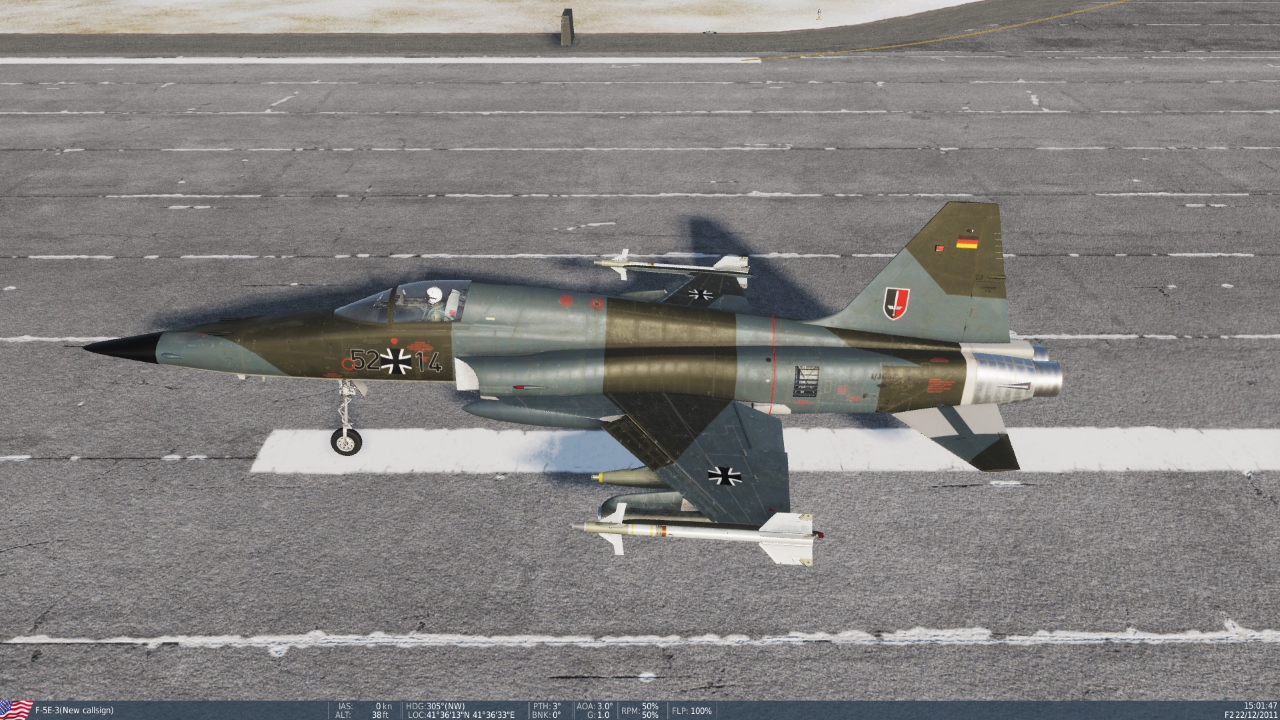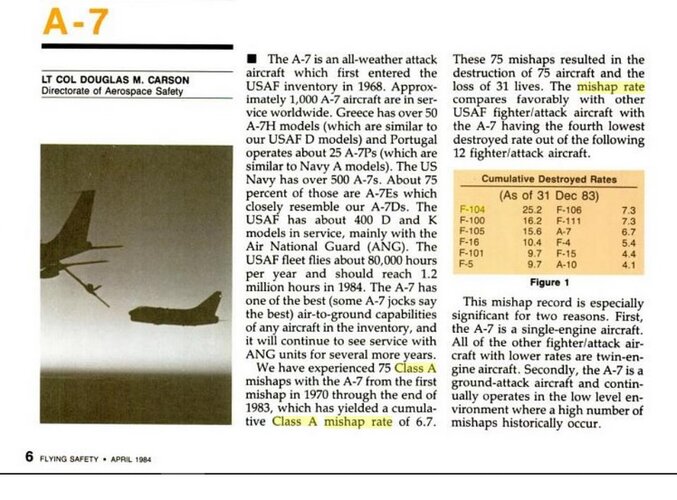You'd think any jet delivering iron bombs at low alt would have suffered similar loss rates to AAA, SAMs and Fighters (pretty much in that order)
True but a lesson for the future when the Luftwaffe is shopping for it's new fighter.
The Thud would be far, far more appropriate in the strike role than the F-104, which despite it's low-level ride qualities, I consider to otherwise be a poor tool for the low-level strike role. I can see no reason why the F-105D couldn't be adept at the recce role, assuming cameras were installed as per the RF-104G. Any interception role would be something of a show-stopper though, as would the price no doubt (leaving aside the "deal").
There is a Century Series fighter that has interception, strike/attack and reconnaissance variants, reasonably competitive performance, an owner historically willing to divest themselves circa 1961 in favour of later platforms and most importantly, no widow-maker moniker attached (that I know of). With twin-engine safety to boot! I know it has been mentioned already but I am surprised it hasn't found more favour. Of course, I speak of the F-101 Voodoo.
The RF variants were well liked and won the odd Royal Flush, so I see no reason the Voodoos couldn't have operated in the weeds with gusto. It was quite capable of delivering a nuclear device with the A/C models and I don't see AIM-9 integration on the B being an insurmountable problem, although AIM-4 commonality with the Swiss, Swedes, Greeks and Turks might indeed be preferable (a joint production/upgrade with Sweden perhaps?)? Somewhat less raw performance than the Zipper, perhaps but I don't think the Voodoo would be particularly moreso in the shadow of WP defences than the Starfighter was at selection anyway. Absent perhaps a few knots, losses would be heavy with either aircraft from the outset. The conceit on both sides was enough would get through...fortunately never put to the test.
The Thud would have a colossal advantage over other types if adopted into German service though. The USAF would have paid the Germans a premium to buy them all back in the late-60s! They could then use the money to buy bigger into the MGM-52 Lance or perhaps the F-111A!



